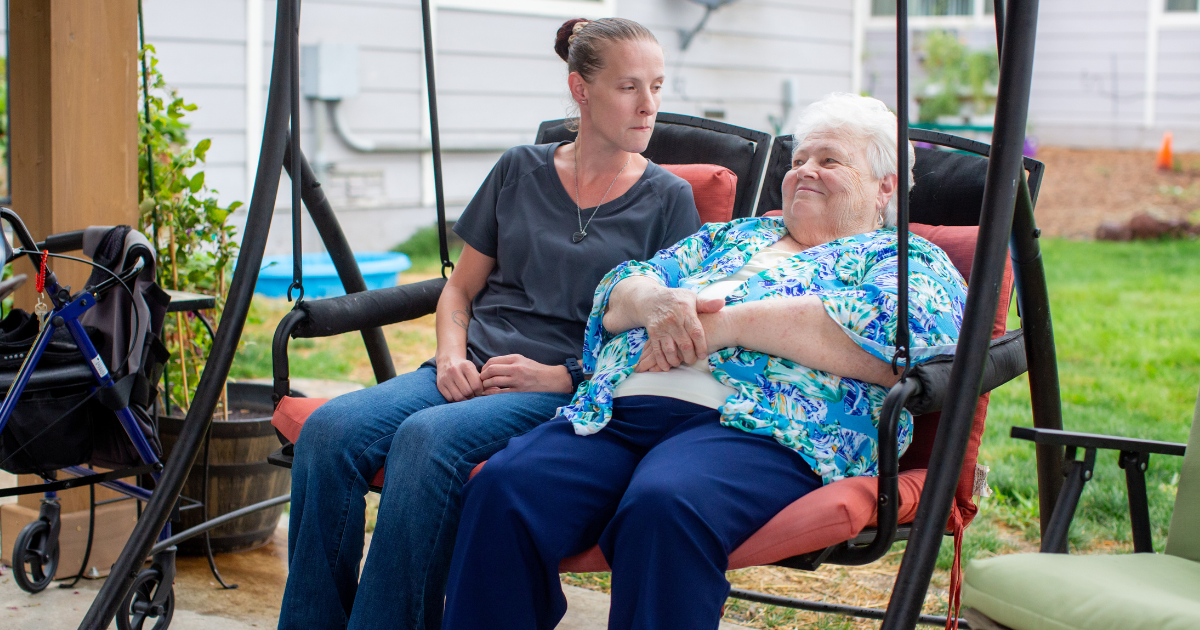As a caregiver, establishing a meaningful and comfortable conversation with your clients is essential for building trust and fostering a positive relationship. Effective communication not only enhances the quality of care but also contributes significantly to the emotional well-being of the client. However, initiating conversations might pose challenges, especially if you’re unsure about where to start or how to maintain engagement. Here’s a comprehensive guide on how to navigate these conversations successfully.
Prepare Ahead of Time
Preparation lays the foundation for successful interactions. Before engaging in conversation, take a moment to gather information about your client’s preferences, interests, and background. Understanding their history, hobbies, and personal preferences can provide valuable insights into potential conversation starters. It’s also beneficial to anticipate topics that may resonate positively with them, making it easier to initiate and sustain engaging discussions.
Introduce Yourself and Stay Positive
A warm and friendly introduction is crucial. Introduce yourself clearly and positively, using a gentle tone and friendly demeanor. Starting on a positive note can set the tone for the conversation, making the client feel more at ease and open to engaging with you.
Beware of Conversation Killers
Avoiding conversation killers such as controversial topics, negative remarks, or invasive personal questions is vital. Topics related to politics, religion, or sensitive issues might lead to discomfort or conflict. Respect boundaries and maintain a safe and comfortable environment for your client.
Keep it Simple
Simplicity is key, especially when initiating conversations with clients. Choose straightforward and easy-to-understand topics to avoid overwhelming or confusing them. Additionally, using clear and concise language can help in ensuring effective communication.
What is Naturalistic Observation and How Can it Help Here?
Naturalistic observation involves observing individuals in their natural environments without manipulation or interference. As a caregiver, practicing naturalistic observation allows you to understand your client’s preferences, communication style, and non-verbal cues. These observations provide valuable insights into how to tailor conversations to suit their comfort and engagement levels.
Ask for Guidance and Preferences
Engage your client by asking for their guidance or preferences. Encourage them to share their thoughts, opinions, or desires regarding various topics. This not only shows respect for their autonomy but also helps in directing the conversation towards subjects that interest them.
Keep Body Language in Check
Non-verbal communication plays a significant role in conversation. Maintain open and welcoming body language, such as making eye contact, nodding affirmatively, and maintaining a relaxed posture. Pay attention to their body language as well, as it can offer cues about their comfort level or interest in the conversation.
Listen – The Most Important Along with Expressing Interest
Active listening is paramount. Show genuine interest by actively listening to what your client has to say. Reflect on their words, ask relevant follow-up questions, and show empathy. Demonstrating that you value and acknowledge their thoughts fosters trust and deeper connections.
Keep a Balance in the Conversation
Maintain a balance between speaking and listening. Avoid dominating the conversation while also ensuring that your client feels heard and respected. Encourage them to share their thoughts and stories while also contributing your own experiences or anecdotes when appropriate.
Being More Interesting and How it Can Help
Bringing interest and enthusiasm into conversations can make them more engaging. Share positive and uplifting stories, ask open-ended questions, and introduce diverse topics to keep the conversation lively. Your own genuine interest and enthusiasm can encourage the client to participate more actively.
Conclusion
Effective communication as a caregiver is foundational to building trust and meaningful connections with your clients. Preparation, active listening, and a considerate approach to boundaries are essential elements in fostering a comfortable environment for engaging conversations. By adhering to these guidelines and being attuned to your client’s preferences and comfort levels, you can significantly impact their emotional well-being positively. At our 31 locations across Washington, Oregon, and Idaho, we’re committed to supporting caregivers and individuals seeking home care assistance. We stand ready to provide guidance and assistance, ensuring that caregivers have the tools they need to create nurturing and supportive environments for their clients.
Sources:





